You don't want to just get by – you want to excel. And actually, you don't just want to excel – you want to be the best. You want to be the MVP of any room you walk into.
In order to achieve such a lofty goal, you'll need a pre-workout to match. If you want to be the best, you should expect the best from your supplements.
And that's where InnovaPharm's MVPre pre-workout comes in.
The Real MVPre: All-Star Doses in a Daily Driver Pre-Workout
One thing that jumps out about this formula is that nothing is underdosed. Plus, a couple of key ingredients are dosed very well – far above and beyond the doses we typically see in this category. Two major things to note are the 250 milligrams of caffeine paired with 10 grams of L-Citrulline!
So does MVPre live up to its name? You be the judge, but we're leaning hard towards a yes. Let's get into how it works, but first, check the PricePlow news and deals:
InnovaPharm MVPre 365 – Deals and Price Drop Alerts
Get Price Alerts
No spam, no scams.
Disclosure: PricePlow relies on pricing from stores with which we have a business relationship. We work hard to keep pricing current, but you may find a better offer.
Posts are sponsored in part by the retailers and/or brands listed on this page.
This area is reserved for Team PricePlow's upcoming videos.
Subscribe to our channel and sign up for notifications so you catch it when it goes live!
MVPre 365 Ingredients
In a single 1 scoop (23 gram) serving of MVPre from InnovaPharm, you get the following:
-
L-Citrulline – 10,000 mg
Citrulline is an amino acid that boosts nitric oxide (NO) synthesis.[1]
As a conditionally essential amino, citrulline can be produced by your body endogenously, but only in limited quantities. Thus, in order to achieve optimal citrulline levels, supplementation is usually advisable.
How citrulline turns into NO
Citrulline is not the most direct precursor to NO, though. That honor belongs to arginine, and citrulline is a precursor to arginine.
Here's what the full conversion path looks like:
Citrulline → arginine → NO
Looking at this, you might wonder why we don't just take arginine instead. Well, as it turns out, citrulline's bioavailability is so much better than arginine's that even with that extra conversion step, citrulline actually works better for boosting NO.[2,3]
Why more NO is good
Of course, if we're going to take citrulline, it behooves us to understand why boosting NO is a good thing in the first place. The basic reason is that more NO means more vasodilation, a phenomenon where your arteries expand in diameter.
Vasodilation comes with a number of key benefits. First of all, the same volume of blood in a bigger space means lower blood pressure and heart rate, which reduces strain on your heart.[4-6] But it also means, because blood flows more efficiently, that your cells have better access to nutrients and can have metabolic wastes removed faster.
Citrulline's participation in the nitric oxide cycle and the urea cycle. The enzyme argininosuccinate converts citrulline to arginine, and arginine stimulates the production of nitric oxide
As a result, increased vasodilation can lead to better performance, improved recovery, and even better sleep quality. But in the context of a pre-workout, what we're really interested in is the performance side of things.
So what can citrulline do for performance? Here's what the literature says:
- Higher power thanks to improved oxygen uptake[7]
- Prolonged athletic endurance – about 50% longer[8]
- Reduced post-workout muscle soreness[8]
- Increased growth hormone (GH) production[9]
- Reduced protein catabolism[10]
- Faster muscle protein synthesis[11,12]
Finally, citrulline can increase your body's supply of ornithine,[13] an amino acid that helps detoxify ammonia.[14] Since ammonia buildup can produce both mental and physical fatigue, accelerating ammonia removal can help prevent or decrease the severity of that fatigue.
Ornithine supplementation is associated with better cellular metabolism and improved sleep quality, thanks partly to its ability to reduce stress. Ornithine can decrease the ratio of cortisol to DHEA in your body.[14]
10 grams in MVPre – awesome dose!
One thing that's super awesome about MVPre is the dose of citrulline used here. While the minimum effective dose has been measured at just 3,000 milligrams, we have more than three times that in MVPre, which is awesome because studies show that citrulline's benefits increase dose-dependently[15] up to about 10 grams.[16]
-
Beta-Alanine – 3,200 mg
Beta-alanine is a common preworkout formula because it's an ergogenic aid, a category of supplements defined by their general ability to improve the work capacity of your body during exercise. More specifically, beta-alanine can increase athletic endurance, by combining with the amino acid histidine to produce a dipeptide molecule called carnosine, which helps your body get rid of lactic acid (AKA lactate).
Because lactic acid accumulation in muscle tissue during exercise is a major cause of muscular fatigue, helping your body get rid of it faster via beta-alanine supplementation can help delay the start of that fatigue.[17]
If you're wondering why not just take carnosine instead, it's because beta-alanine is to carnosine as arginine is to citrulline – although it's a less direct precursor, beta-alanine's oral bioavailability is so much better that it ends up being more effective.
The other carnosine precursor, histidine, generally doesn't need to be supplemented since it's abundant in commonly-eaten foods. As a result, beta-alanine availability is almost always the rate-limiting factor in carnosine synthesis.[18,19]
Two meta-analyses that included over 40 peer-reviewed studies concluded that beta-alanine is most suitable for improving endurance during exercise performed at a level of exertion you can sustain for 30 seconds to 10 minutes.[20,21]
Beta-alanine tingles are innocuous
It's common for people to perceive tingles in their upper body after supplementing with beta-alanine. If this happens to you, there's no need to worry – a beta-alanine safety review found that these tingles are totally harmless.[22]
-
L-Tyrosine – 1,500 mg
Tyrosine is an amino acid that can help manage stress and support energy levels.
It's a precursor to catecholamine neurotransmitters like dopamine, adrenaline, and noradrenaline, which are all important for focus, motivation, and metabolism.[23-25] Dopamine in particular, as most readers probably know, is huge for feeling up to the task of powering through your toughest workouts.
Adrenaline and noradrenaline on the other hand, can potentially aid fat loss, thanks to their ability to suppress hunger.[26] And what's more, adrenaline can directly stimulate fat burning (lipolysis).[26,27]
Perhaps most importantly, tyrosine is also a building block for your body's thyroid hormones, T3 and T4.[28,29] Since the function of the thyroid tends to take a hit when subjected to rigorous dieting and intense exercise,[28-30] – and let's face it, most of the PricePlow blog readers regularly engage in at least one, and usually both, of these behaviors – a little tyrosine supplementation can go a long way towards helping preserve metabolic function during a stressful training block.
Great for sleep deprivation
The best use case for tyrosine is actually supporting c ignition during sleep deprivation. According to studies conducted by the U.S. military, tyrosine is actually better at this than world-famous stimulant caffeine, which we think you'll agree is saying a lot.[31,32]
Another awesome dose
MVPre is really living up to its name so far – after an awesome citrulline dose, now we're seeing a great tyrosine dose. The minimum accepted dose for tyrosine is in the ballpark of 500 milligrams, but in our experience, bigger doses definitely work better.
-
N-Acetyl L-Carnitine – 1,000 mg
Acetyl L-carnitine (ALCAR) is one of the supplement industry's favorite nootropic ingredients. It has powerful neuroprotective, neurotrophic, and even anti-depressant effects.[33]
Like any form of carnitine, ALCAR's basic mechanism of action is facilitating the uptake of energy substrates like fatty acids by your cells' all-important mitochondria. Ultimately, this helps them produce adenosine triphosphate (ATP),[34] which can be a big deal since ATP is the energy currency that your cells consume in performing all metabolic functions.
Huge synergy in this formula between the choline and acetyl L-carnitine! If you're low on acetyl groups, your choline may not get to the acetylcholine that you want. ALCAR (Acetyl L-Carnitine) listed above helps with that bottleneck.
What makes ALCAR special is the fact that it readily passes through the brain blood barrier (BBB),[35] which is something that other forms of carnitine, and most supplements in general, can't really do. In fact, for any given supplement, you're lucky to find just one form that can transit the BBB – and for carnitine, ALCAR is that form.
In animal models, supplementing with ALCAR can upregulate neuroplasticity, and facilitate learning.[36]
One human study found that adults over the age of 65 suffering from mild cognitive impairment (MCI) performed much better on cognitive tests than those who received a placebo.[37]
-
Taurine – 1,000 mg
Taurine is an amino acid with tons of different health benefits[38] – it has ergogenic, nootropic, and lipolytic (fat-burning) effects, just to name a few. And incredibly, taurine manages all of this, and more, without being a stimulant. Thanks to its incredibly broad range of uses, taurine is one of the PricePlow Blog editorial staff's all-time favorite ingredients.
How taurine supports athletic performance
Taurine's ergogenic properties can be explained primarily by the fact that it's an osmolyte, a category of supplements defined by their ability to manipulate cellular fluid balance. More specifically, taurine can increase the water content of your cells above baseline, a state referred to as cellular hyperhydration.[39] With extra water, your cells get extra nutrients, an improved ability to eliminate toxins, and a greater resistance to heat stress,[40] all of which can be useful during both intense exercise and the post-workout recovery process.
That's because basically, hyperhydrated cells work harder for longer, which can produce significant improvements in anaerobic and aerobic endurance alike.
According to a 2018 meta-analysis, just a single 1-gram dose of taurine, taken immediately before exercise, can significantly increase athletic endurance.[41] Fortunately for us, that's the same dose present in InnovaPharm MVPre.
Taurine can also facilitate cellular calcium signaling in muscle tissue, which helps prevent cramps during extended efforts.[42,43]
Brain benefits
As if all that weren't enough, taurine is also a potent antioxidant.[44,45] It's especially good at protecting neuronal mitochondria from oxidative stress.
As one study points out, taurine can help mitigate "pathologies associated with mitochondrial defects, such as aging, mitochondrial diseases, metabolic syndrome, cancer, cardiovascular diseases and neurological disorders."[46]
Taurine is also GABAergic, which means it has the same calming, inhibitory effect on neurons as the neurotransmitter gamma aminobutyric acid (GABA). Just like GABA, supplementing with taurine can significantly decrease anxiety,[47] and help lessen neurological inflammation.[47]
Amazingly, taurine can also stimulate mitochondrial biogenesis – the creation of new mitochondria – in your neurons.[46]
Finally, taurine increases the activity of dopamine, a neurotransmitter that's crucial for focus and motivation, while supporting the health and function of dopamine-producing neurons.[48,49]
In a word, taurine is neuroprotective in several important ways. Supplementing with this amino acid can make a huge difference in focus, motivation, and post-workout cognitive performance.
Helps improve body composition
But wait – there's even more! Taurine can also help us stay lean, by supporting the transformation of white adipose tissue (WAT) into brown adipose tissue (BAT).[48,50-53]
The reason this matters is that while WAT is essentially metabolic deadweight, BAT is metabolically active and actually burns calories. The process by which BAT does this, non-shivering thermogenesis (NST), consumes both fatty acids and glucose as substrates, meaning it can help decrease blood sugar, cholesterol, and triglyceride levels.[50]
At 6mg/kg bodyweight caffeine and 3g total taurine, peak power and average power are significantly increased. Even lactate trended in the right direction![54]
The greater your body's ratio of BAT to WAT, the higher your metabolic potential – cold exposure triggers BAT to burn more calories,[50] so pair supplements like taurine with cold baths or showers.
-
Glucuronolactone – 500 mg
Glucuronolactone is a natural byproduct of your liver's glucose metabolism. It's commonly added to energy drinks for its supposed ability to improve mental and athletic performance.
Given its ubiquity, you'd expect there to be a lot of research on glucuronolactone's effects. However, this isn't the case. Only a handful of studies have been done on isolated glucuronolactone, and what's more, they were done in rats, not humans. According to those studies, glucuronolactone does seem to synergistically improve exercise performance when administered with caffeine, but science has yet to elucidate the precise mechanism by which it does this.[55,56]
When it comes to human research, the only existing studies were done with glucuronolactone-containing energy drinks, meaning they were uncontrolled since the other ingredients count as confounding variables. Still, it's worth mentioning that these studies found better memory, reaction time, focus, and alertness.[57-60]
-
Pink Himalayan Salt – 500 mg
Pink Himalayan salt is recognized as an excellent source for electrolytes and trace minerals. Most of what it supplies is sodium – it consists of about 40% sodium by weight, meaning that this 500 mg dose of pink salt supplies roughly 200 mg of sodium in each 1-scoop serving of MVPre.
While sodium has gotten a bad rap, it's actually important to ensure your sodium stores stay topped off whenever you're engaged in intense exercise. That's because sodium plays a crucial role in supporting muscular function and athletic performance,[61,62] and we lose a ton of sodium in sweat. In order to prevent sodium levels from dropping too low, then, it's not a bad idea to front load a little extra sodium before your workout.
-
Caffeine Anhydrous – 250 mg
InnovaPharm NovaBurn 2.0 is out - it's a fat burner with a stimulant-based (caffeine, theobromine, synephrine) and a stim-free (enXtra) option! When you learn about enXtra, you'll see how brilliant of a move this is. You can stack NovaBurn Stim-Free with MVPre 365!
Caffeine is a methylxanthine stimulant that's capable of crossing the blood brain barrier, meaning it can exert a high degree of influence over the workings of the central nervous system. As such, caffeine supplementation can produce significant improvements in mood, focus, energy, and physical performance.[63,64] Anhydrous caffeine is fast-acting, thanks to its rapid digestion and absorption.
It works by blocking the action of adenosine, a nucleotide byproduct of neuronal metabolism that ordinarily makes you feel tired as it accumulates. Caffeine doesn't prevent adenosine from building up, but rather prevents it from binding to the adenosine receptor.[63]
Besides helping fight fatigue, caffeine can also help kick your cellular metabolism into overdrive by inhibiting phosphodiesterase, an enzyme that deactivates cyclic adenosine monophosphate (cAMP). Less phosphodiesterase activity means more cAMP, which can be a great thing since cAMP tells your cells to burn calories for energy.[64-66]
Caffeine is especially effective when it comes to increasing your body's rate of fat burning. One study found that caffeine administration can actually make your body burn fat 50% faster than normal.[67]
Thanks to the impact it has on cellular function, caffeine can improve several facets of athletic performance, including strength, speed, and endurance.[68]
-
CDP-Choline (Citicoline Sodium) – 250 mg
Analysis of the study results revealed that older adults taking citicoline showed statistically significant improvements in visuospatial working memory (spatial span), episodic memory (paired associate test), and overall memory performance (composite memory).[69]
Citicoline, also known as CDP-Choline, is a form of choline engineered for optimal bioavailability.
Choline plays an indispensable role in maintaining and repairing phospholipid bilayer membranes[70] – perhaps its most important role, given the absolutely essential role that those membranes play in cellular integrity and function. But it's also an important precursor to acetylcholine, a neurotransmitter that's crucial for learning and memory consolidation, which is why we refer to it as "the learning neurotransmitter."[71] Elevated levels of acetylcholine are associated with improved cognitive function, a category that includes not just learning, memory, but also motor skills.[72,73]
A deficiency in choline can lead to various health issues, such as cognitive impairment, organ damage, and non-alcoholic fatty liver disease (NAFLD).[74] Since choline is predominantly found in animal-based foods, individuals following a plant-based diet, such as vegans or vegetarians, may struggle to meet their choline requirements. In that case, supplementation should be considered.
Studies focusing on citicoline have corroborated its impressive ability to enhance focus, attention, and mental energy.[75,76] Two of its basic chemical components, choline and uridine, have been shown to synergistically improve cerebral blood flow, stabilize mitochondrial function, and offer the typical benefits associated with choline supplementation.[77,78]
Citicoline especially stands out for its capacity to upregulate dopamine.[79] Among other things, you can think of it as the feel-good form of choline.
-
Theobromine HCl – 100 mg
Theobromine, a methylxanthine alkaloid and chemical cousin of caffeine, exhibits stimulant, bronchodilatory, and vasodilatory properties.[80]
Just like caffeine, theobromine inhibits phosphodiesterase, which upregulates cyclic adenosine monophosphate (cAMP),[81] thus enhancing mitochondrial function[82] and boosting cellular energy production from both fat and glucose substrates.
Crucially, theobromine appears to support optimal nitric oxide production and function by safeguarding the health and function of NO-synthesizing endothelial cells.[84]
-
Huperzia Serrata (whole herb) Extract (1% Huperzine-A) – 15 mg
Huperzine A, the primary active compound found in Huperzia serrata, inhibits acetylcholinesterase, the enzyme responsible for degrading acetylcholine.[85] This property allows huperzine A to complement the effects of alpha-GPC, which boosts the production of acetylcholine (ACh). By inhibiting acetylcholinesterase, Huperzine A prolongs the action of that extra ACh, thereby enhancing its efficacy.
Additionally, Huperzine A has been shown to stimulate neurogenesis, the creation of new neurons.[86]
-
Vitamin B3 (as Niacin) – 15 mg (95% DV)
Niacin, also known as vitamin B3, serves as a crucial precursor for the synthesis of nicotinamide adenine dinucleotide (NAD+).[87-89] The elevation of NAD+ levels facilitates a variety of fundamental metabolic processes including cellular energy production, liver function, and DNA repair.[90-93]
Niacin supplementation can potentially benefit a huge number of crucial metabolic processes in your brain.
Niacin also has the capacity to enhance the expression of adiponectin,[94] a hormone that is known to have a significantly beneficial impact on metabolic function. Adiponectin plays a key role in enhancing systemic insulin sensitivity, which is especially important since low levels of adiponectin are commonly observed in overweight and obese individuals.[95] Adiponectin exerts its effects by activating AMP-activated protein kinase (AMPK), a critical regulator of metabolic pathways.[96]
Moreover, niacin can reduce the production of inflammatory cytokines by adipose tissue,[94] a noteworthy benefit considering the association between this type of inflammation and metabolic derangement.[97]
-
Vitamin B12 (as Methylcobalamin) – 1 mg (41,665% DV)
Methylcobalamin is the vitamin B12 variant that's endorsed by PricePlow. Unlike the cheaper and more ubiquitous cyanocobalamin B12, methylcobalamin serves as a methyl donor, meaning it can support metabolic processes reliant on methylation, the chemical transfer of methyl groups (chemical formula CH3).[98]
Vitamin B12 is indispensable for the formation of red blood cells, and its deficiency can lead to megaloblastic anemia,[99,100] a condition characterized by enlarged red blood cells and reduced count, which decreases overall aerobic capacity.
Insufficient B12 levels are linked to elevated homocysteine levels and, in pregnant women, significantly heightened risk of fetal birth defects.[101-103]
Even marginally low B12 levels—within the lower spectrum of the normal range—are associated with impaired memory function,[104] partly due to the impact of B12 deficiency on homocysteine levels in the blood.[105] Moreover, B12 is a crucial precursor to S-adenosylmethionine (SAMe), which is essential for methylation, myelination, and phospholipid synthesis in the central nervous system.[105]
Although the B12 supplementation's ability to enhance energy levels among non-deficient individuals remains uncertain, fatigue serves as an early indicator of B12 deficiency,[106] so if you're feeling run down, a nice B12 megadose like this might help.
All Currently Available Flavors
Conclusion
In such a crowded supplement category as pre-workout formulas, it's honestly tough to say which is the best. But make no mistake, it doesn't get much better than MVPre – and it definitely doesn't get better at this price point.
The 10 gram dose of citrulline is just awesome. We hope to see this become the new industry standard. Of course, if you're an endurance-focused athlete, this might actually be too much citrulline – vasodilation and long cardio sessions can lead to excessive tissue swelling, which can be uncomfortable or even impair performance. In that case, you should consider taking a ½ scoop dose of MVPre.
Similarly impressive is the 1,500 mg dose of tyrosine. You will definitely feel this, especially if you've been a little short on sleep the night before.
Plus, we have the classic choline and huperzine A stack for acetylcholine activity maximization, which will definitely help get you in the zone.
However, a good formula isn't just about dose maxing. The industry as a whole definitely needs to dial back a few things, and caffeine is one of them – that's why we're happy to see InnovaPharm using "only" 250 milligrams of caffeine per 1-scoop serving. This is enough caffeine to work, but not so much that the product is going to cause issues for most people. Our philosophy is simple – keep the caffeine conservative, and if consumers want a little extra, they can wash your product down with some tea, coffee, or energy drink.
Another thing we're happy to see conservatively dosed is niacin. Niacin is awesome, and supplementation is almost always a good thing. However, we are learning that megadoses can cause issues in the case of a few specific B vitamins, and niacin is one of them. Again, the dose used here is big enough to work well, but not too big to cause issues.
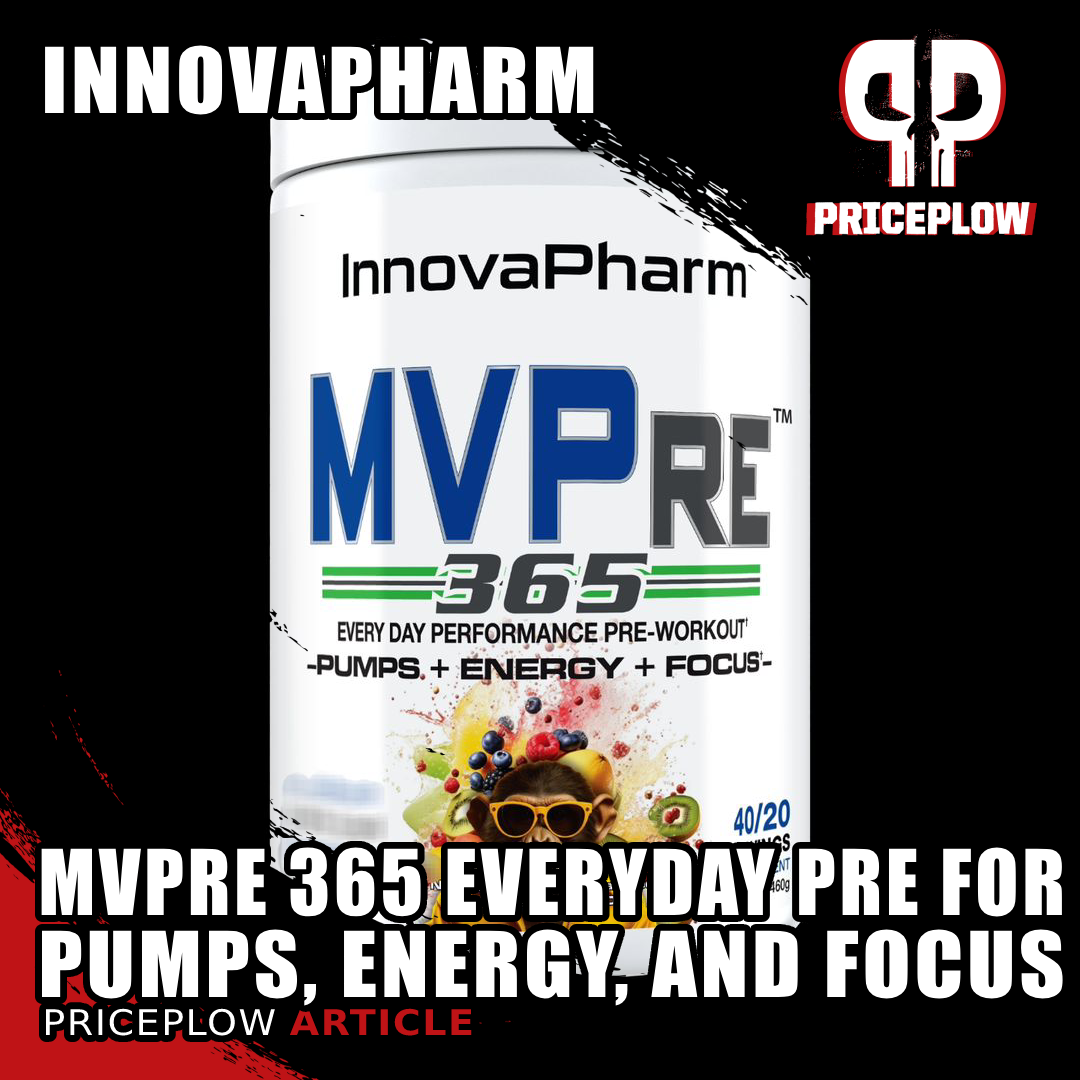
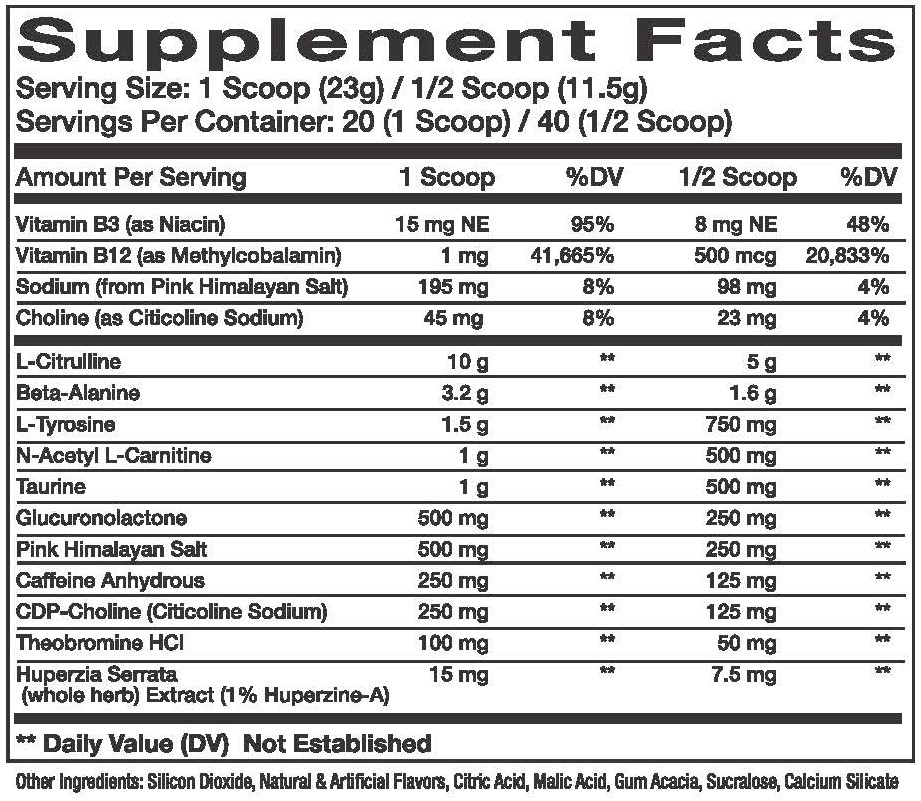


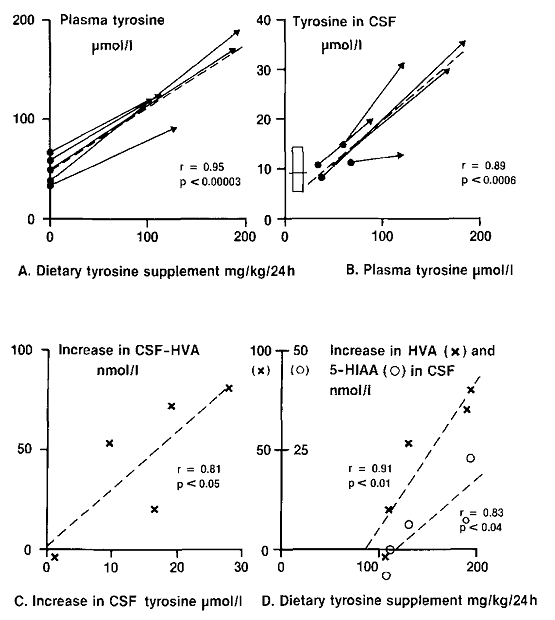
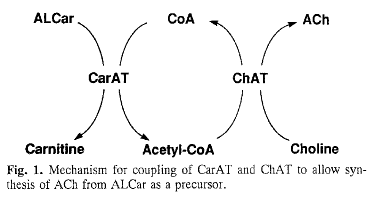

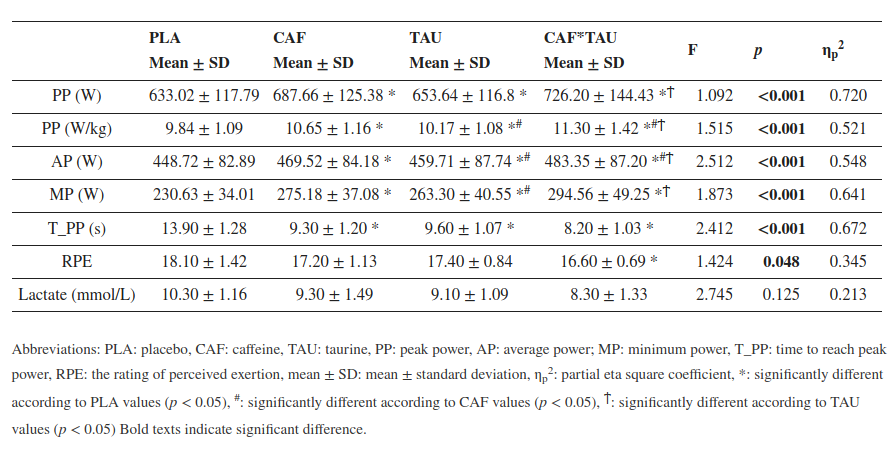



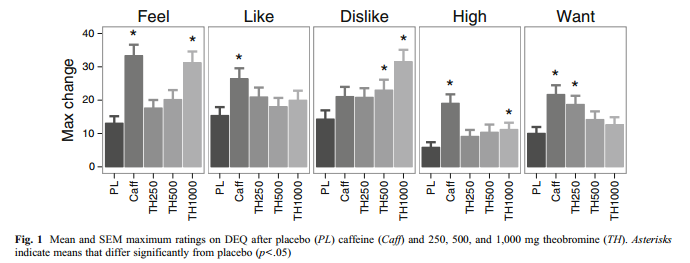

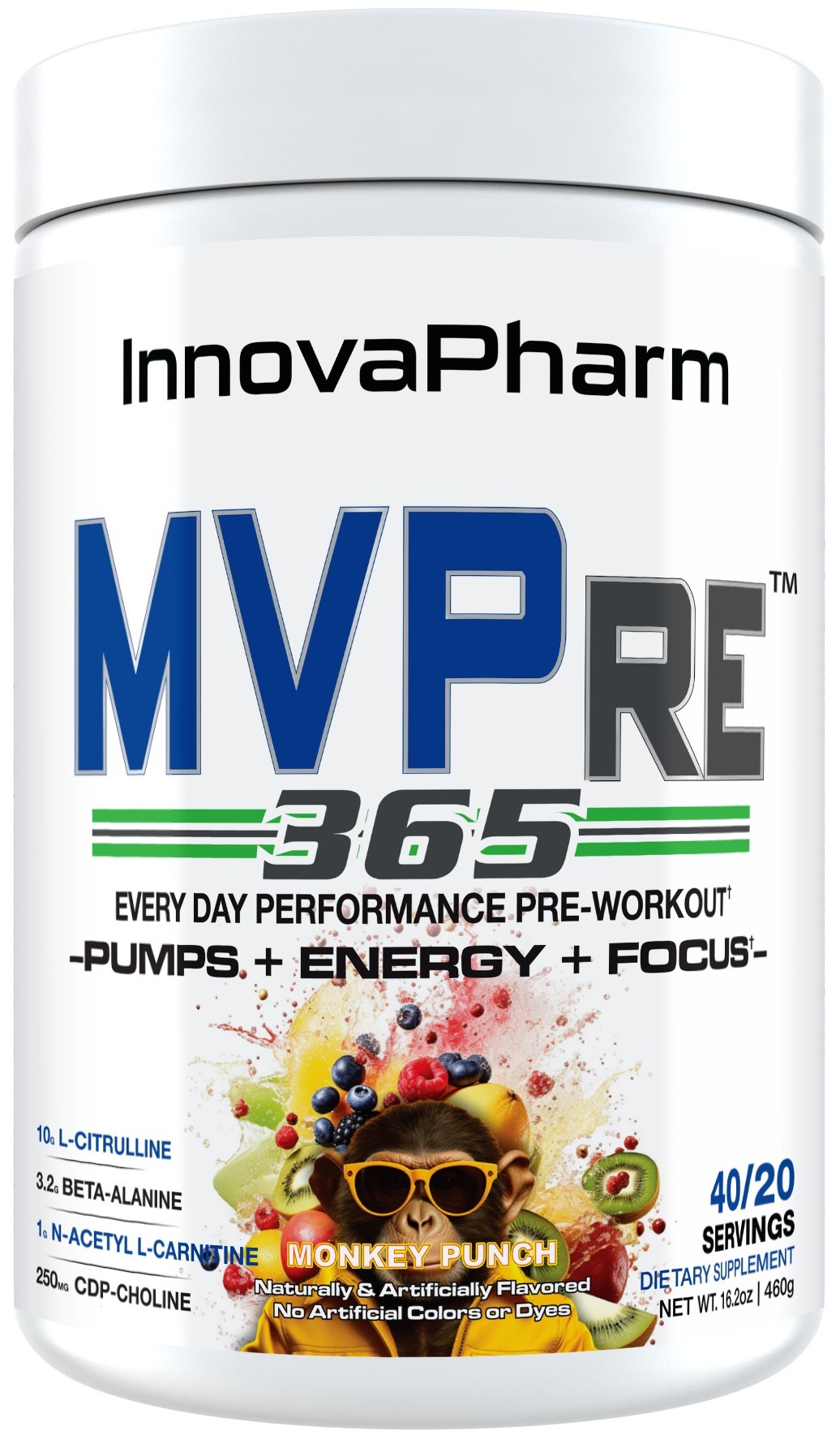



Comments and Discussion (Powered by the PricePlow Forum)